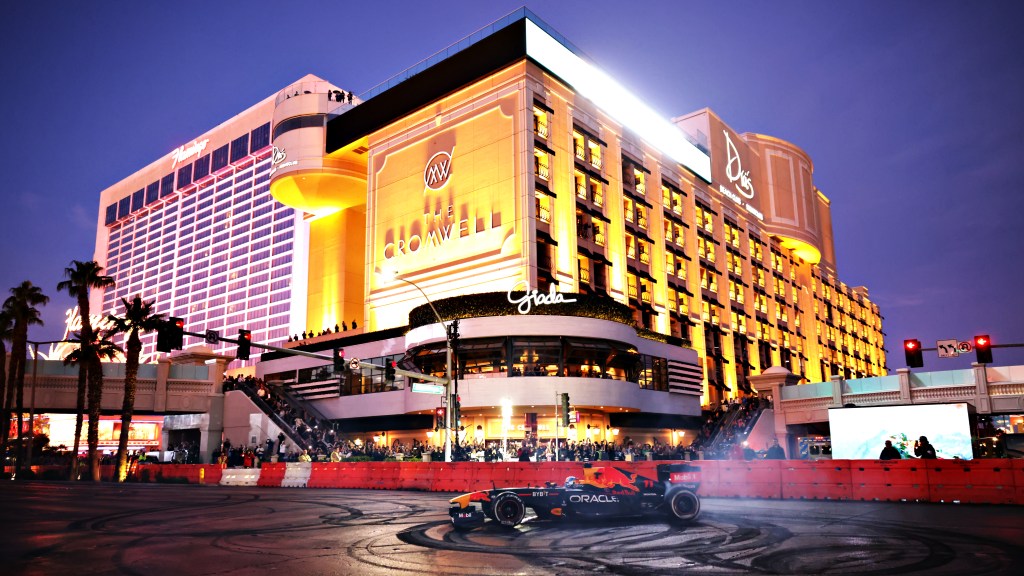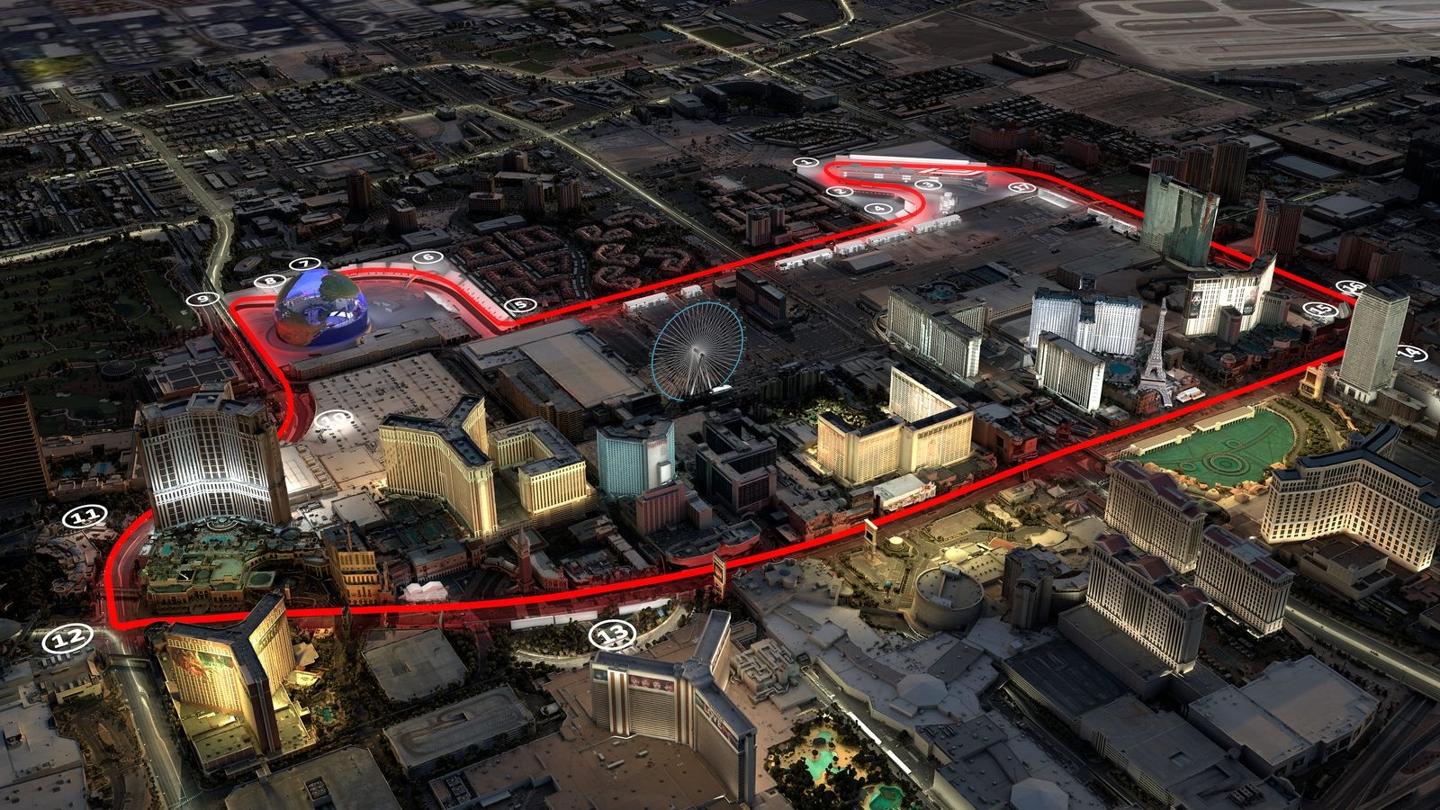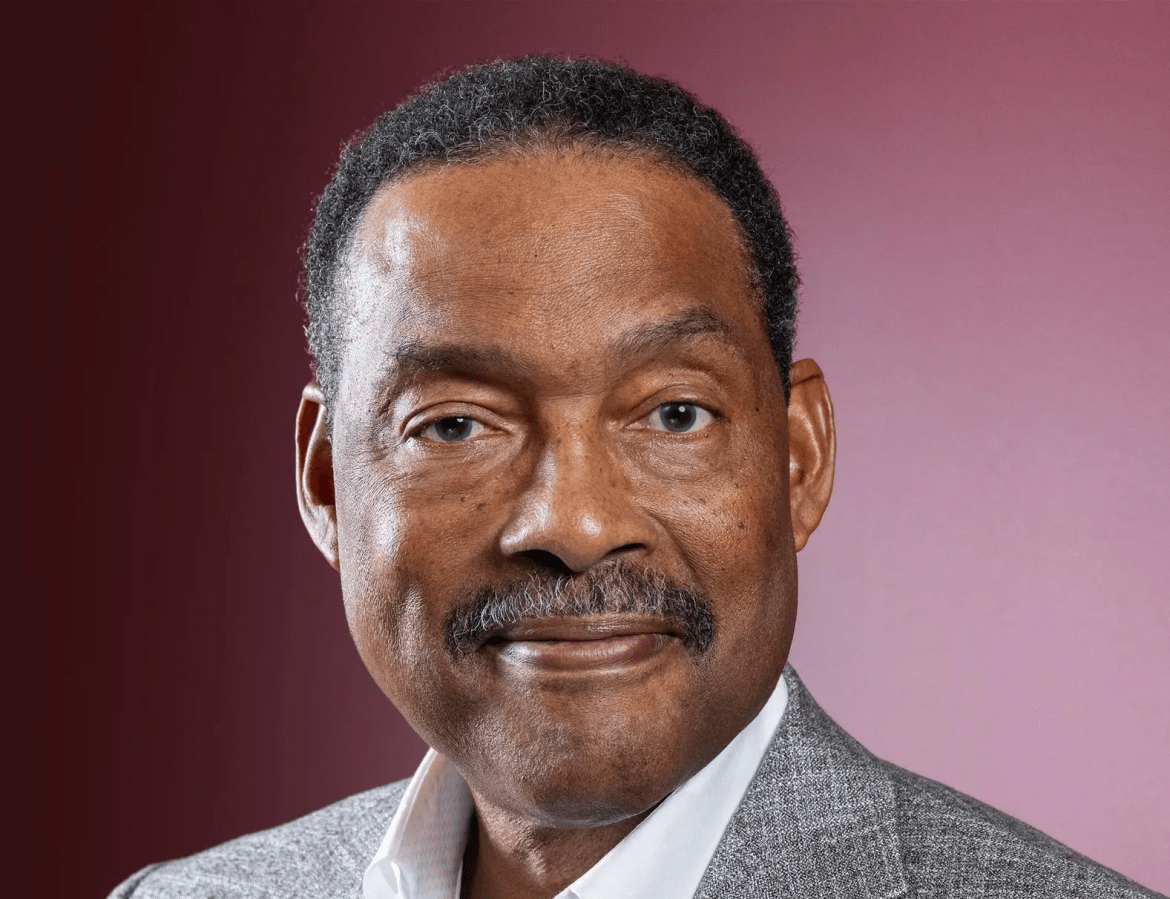After years stuck in neutral, F1 is finally getting into gear in America, thanks to a high-rolling, 200-mph gamble in Sin City.

By Suzanne Rowan Kelleher and Brett Knight, Forbes Staff
Next Saturday at 10 p.m. local time—that’s 1 a.m. on Sunday for East Coast night owls—Formula 1 racing will return to Sin City after a 40-year hiatus with the inaugural Las Vegas Grand Prix. Set against a neon-drenched cityscape, the high-octane spectacle will see 20 drivers take 50 laps around the 3.8-mile street circuit, with its 17 turns winding past the new MSG Sphere. After two quick bends and a hard left, it’s a straight shot down the Las Vegas Strip at speeds up to 212 m.p.h., racing past the Venetian and Caesars Palace and zipping between the famed Bellagio fountains and the Eiffel Tower at Paris Las Vegas.
“Vegas is going to be the biggest sporting event on the planet this year. I mean, it’s going to be insane, that race,” says Christian Horner, team principal of series champion Red Bull Racing. “I’ve never seen interest in a Grand Prix like this one.”

Night Circuit: Drivers will take 50 laps on the 3.8-mile course that winds around and between iconic landmarks on the Las Vegas Strip.
Courtesy of Las Vegas Grand Prix
With that kind of hype, three-day grandstand tickets have sold for $1,500 or more—about double the cost of tickets to last month’s F1 race in Austin, Texas—and prices go up from there. Access to the newly built Paddock Club—Formula 1’s enormous trackside clubhouse in the pit building—went for $15,000 per person, and sold out eight months ago. And for packages that bundle hotel rooms with race tickets and meals, the sky penthouse is the limit. Caesars Palace’s “Emperor package,” for example, has a $5 million price tag and comes with five nights in the 10,300-square-foot Nobu Sky Villa plus a 4,700-square-foot terrace that hovers 140 feet above the Strip and can accommodate 75 guests for a race-viewing party—not to mention 12 tickets to the Paddock Club, a private dinner for 12 prepared by Michelin-starred chef Nobu Matsuhisa, and a Rolls-Royce and personal driver and for the stay.
Every venue on the Strip, it seems, is primed to party, with newly renovated facilities and a festive atmosphere filled with D.J.s, acrobats, percussionists and all manner of entertainment. The celebration kicks off Wednesday with an opening ceremony featuring a lineup that includes Keith Urban, will.i.am, Andra Day, Steve Aoki and Jared Leto’s band, Thirty Seconds to Mars. And for the actual racing on the track, with practice runs on Thursday and qualifying heats on Friday in addition to Saturday’s race, there are many other premium viewing opportunities. That includes Sports Illustrated’s Club SI on the Strip, which, as part of its three-day, $7,500 ticket, also offers access to parties hosted by the likes of David Beckham and Shaquille O’Neal.
Sports Illustrated spent $1 million converting the three-story Margaritaville restaurant at the Flamingo into Club SI, and plenty of other brands are pouring money into sponsorships and hospitality suites. Meanwhile, the Las Vegas Convention and Visitors Authority (LVCVA), has committed roughly $6.5 million to Grand Prix week to provide security (although that is funded through a room tax charged to tourists).
Even individual teams are spending big. Mercedes team principal Toto Wolff says his outfit is investing nearly $15 million into a hospitality unit expected to hold nearly a thousand people—“the biggest single activation that we’ve ever had,” double the price of the team’s next-costliest headquarters, at the Miami Grand Prix.
That all looks like chump change, however, next to the $400 million that F1 owner Liberty Media projected would be its expense for the event, with the price tag continuing to rise. On a third-quarter earnings call this month, Liberty Media disclosed it had spent $280 million in capital expenditures in 2023 related to track and pit preparation in Las Vegas.
“They bought 40 acres of property for about a quarter-billion dollars,” says Steve Hill, CEO of the LVCVA, offering some back-of-the-cocktail-napkin math while noting he isn’t privy to F1’s financial statements. “They’re putting up a permanent 300,000-square-foot paddock building that is likely costing $1,000 per square foot. Then they’re going to be spending over $100 million on the circuit itself. So that’s $650 million before you think about all the people that they employ and all the other miscellaneous things they’re spending money on.”
Liberty Media CEO Greg Maffei acknowledged on the earnings call that “Vegas is proving to be a bigger spectacle, and more impactful, than we had anticipated,” but he also emphasized that “we remain very bullish on the impact of Formula 1 overall in Las Vegas, and the potential for this race to be a profitable exercise itself” in future years. An F1 executive went even further in a 2022 interview with Sports Business Journal, saying, “It’s going to be the home of Formula 1 in the U.S.”

Smokin’ Hot: Mercedes driver Lewis Hamilton revs his engine at the Las Vegas Grand Prix launch party last November.
Photo by Dan Istitene/Formula-1/Getty Images
It’s not hard to see an upside to the marriage of F1 and Las Vegas, considering the history of open-wheel racing in America. While the Indianapolis 500 was considered part of Formula 1’s calendar for the series’ inaugural season in 1950, the sport has largely sputtered in the U.S. in the decades since. Among the destinations that have hosted races are Sebring, Florida, and Watkins Glen, New York, and from 2008 through 2011, F1 had no American races at all. Las Vegas hosted a Caesars Palace Grand Prix in 1981 and 1982, held in the hotel’s parking lot; the race is now remembered as an unmitigated disaster, with perhaps the worst circuit in F1 history. “I’ve had the fortune of being able to do this, racing, for 23 years or so, so I went through the dark times,” Williams Racing team principal James Vowles says, pointing specifically to a calamitous 2005 race in Indianapolis. “We were sort of the black sheep, the outlier race that came there, and they were sort of excited by it, but we weren’t IndyCar, and we weren’t Nascar.”
F1 returned to America in 2012, in Austin, and after several years of—at best—slow growth, the sport began to take off with the 2019 premiere of Netflix docuseries Drive to Survive, which proved immensely popular with coveted younger, white-collar, affluent demographics. F1 races have seen a modest bump in their average live viewership in the U.S., which topped 1 million on ESPN for the first time last year, and new brands have flooded into the space, including Las Vegas Grand Prix presenting partner T-Mobile, a first-time auto-racing sponsor. Englewood, Colorado-based Liberty Media, which bought F1 for $4.6 billion in 2017, has hit the gas by aggressively pursuing commercial growth and adding races to the calendar, with the U.S. now the only country to host three. The sport also instituted a cost cap in 2021 to create greater parity between powerhouse teams and the also-rans.
Racing purists balked at some of the changes. For instance, when Liberty’s Maffei said in 2018 that F1 is all about “selling glamor and parties,” Mercedes’ Wolff sniffed that the series “isn’t a shopping channel.” But it’s hard to argue with the results. F1’s market cap now tops $15 billion, and its ten teams are now worth $1.9 billion on average, according to Forbes estimates, up 276% from $500 million in 2019. Ferrari (at $3.9 billion) and Mercedes (at $3.8 billion) now rank among the world’s most valuable teams in any sport. These days, Wolff tells Forbes, “the interest and excitement for Formula 1 is unheard-of in the United States, and the popularity has grown over the last few years to a level that I didn’t think was possible.”
Truly breaking into the mainstream in the U.S., the home of some of the largest businesses on the planet and a horde of commercialized consumers with discretionary income to burn, could turbocharge that growth. The dream would be a media rights deal that blows past the three-year contract F1 signed with ESPN parent Disney in 2022 for a reported $85 million per year. “It’s basically the equivalent of going and doing a deal with every single European country” in terms of aggregated media value, notes Ricky Paugh, founder and managing partner at 1440Sports, which works with F1 teams on partnerships. (For comparison, the NFL’s national media deals will bring in an average of more than $12 billion a year over the next decade.)
The city of Las Vegas, meanwhile, is another iconic brand that is always reinventing itself. Long a magnet for gambling, entertainment and conventions, it raked in a record $79.3 billion in total economic output related to visitor spending in 2022. Still, the LVCVA’s Hill has seen his city’s competitive advantage threatened over the decades. “When I moved here, 35 years ago, we and Atlantic City were the two places you could go and place a bet on games,” he said. “Now you can drive 40 miles from wherever you live and find someplace to bet on sports. You can do it on your phone, if you want.”
One major pivot has reframed Las Vegas as a world-class sports destination, beyond the boxing and mixed-martial-arts fights it has long hosted. In 2017, the Golden Knights brought professional ice hockey to the desert. Three years later, billionaire Mark Davis relocated the Oakland Raiders and ponied up more than half the $1.9 billion needed to build Allegiant Stadium, with public funding covering the remainder. “That has really changed the face of Las Vegas,” Hill says. “Before that, we did not have a venue—not just for football but for Taylor Swift and BTS concerts and international soccer events and everything that you need a 65,000-seat stadium for.”
Allegiant Stadium was barely open for business when Las Vegas trademarked a brash new tagline—“The Greatest Arena on Earth”—and began booking an impressive string of marquee sports events, including the NFL Draft in 2022, the Pro Bowl in 2022 and 2023, the Super Bowl in 2024, and the NCAA basketball tournament’s Final Four in 2028. In April, MLB’s Oakland A’s purchased 49 acres in Las Vegas for a new ballpark ahead of a planned move to Nevada.
Like any bet, the Formula 1 investment in Las Vegas carries risk. For one thing, teams don’t exactly know how the race will play out, with their cars’ tires largely untested in the cold that is expected for Saturday’s Grand Prix. Vowles, the Williams team boss, notes that racing past midnight is unprecedented in F1, adding that while Singapore closes its streets for days before and after its Grand Prix, Las Vegas roadways will be open until a few hours before the race. “This is going to be an active road that we just ask people to politely get off as we run cars round it at 300 kilometers per hour,” Vowles says, only half-joking.
The Grand Prix has also caused considerable antagonism with locals. Businesses along the circuit revolted when Formula 1 tried to charge them $1,500 per head to maintain unobstructed sightlines of the track, a fee that the New York Post reported was eventually lowered to around $50,000 per venue. Construction around the course has snarled traffic for months and marred views of popular attractions. The Bellagio, for example, cut down the trees in front of its fountain to erect grandstands.
Las Vegas currently has only a three-year deal with Formula 1, raising the possibility that the race could fall off the schedule in 2026. Still, the two sides are clearly committed to making the relationship last. Nevada’s Clark County has already granted permission to stage the race on the Strip through 2032, clearly having taken note of projections that the Grand Prix will inject $1.2 billion into the local economy—roughly twice what Super Bowl LVIII is expected to deliver in February.
Those estimates are a function of several factors, explains the LVCVA’s Hill, including the number of ticket-holders (roughly 100,000 for the Las Vegas Grand Prix versus 65,000 for the Super Bowl) and the average hotel stay (three or four nights vs. two). Hill takes particular delight in the event’s timing, over the traditionally dead weekend before Thanksgiving. “It’s been the 51st-best weekend in every other year, and now it will be the best,” he says.
For F1, even with races set to continue in Austin and Miami, Las Vegas is widely expected to become the series’ flagship fixture in America.
“In every other city where Formula 1 races, there is a race promoter that owns the circuit, sells the ticket and puts on the race,” Hill says. “Here, Liberty Media and Formula 1 own this race, and it’s the only place that that’s true. They see the opportunity here, and we see the opportunity with them.”
This article was first published on forbes.com and all figures are in USD.


